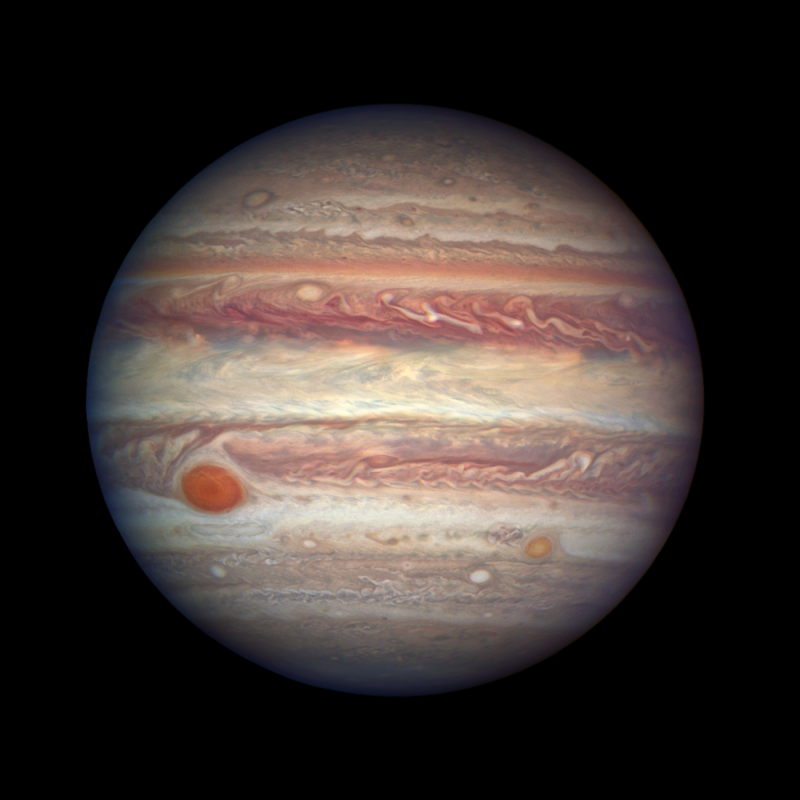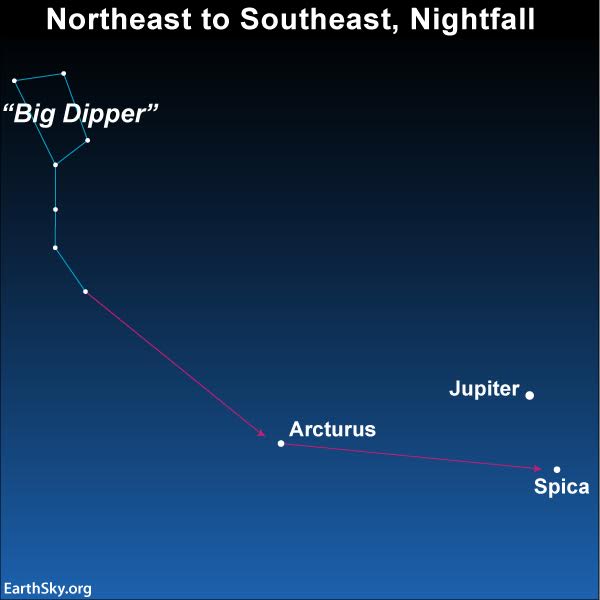
Earth goes between the sun and Jupiter this week, on April 7, 2017. And Jupiter is closer to Earth for this year on April 8. So it was an opportune time, a few days ago, for the Hubble Space Telescope to aim toward Jupiter and capture this beautiful new image. NASA said:
Hubble reveals the intricate, detailed beauty of Jupiter’s clouds as arranged into bands of different latitudes, known as tropical regions. These bands are produced by air flowing in different directions at various latitudes. Lighter colored areas, called zones, are high-pressure where the atmosphere rises. Darker low-pressure regions where air falls are called belts. The planet’s trademark, the Great Red Spot, is a long-lived storm roughly the diameter of Earth. Much smaller storms appear as white or brown-colored ovals. Such storms can last as little as a few hours or stretch on for centuries.
Read more about the new Hubble image via HubbleSite
EarthSky’s once-a-year fundraiser going on now. Please donate to help us keep going!
It’s easy to see Jupiter now! The planet is the brightest “star” in the evening sky, brightest thing up all night (with the exception of the moon) until Venus rises shortly before dawn. You can’t miss Jupiter. But in case you feel uncertain, you can also follow the arc in the Big Dipper’s handle and speed on to Spica, the bright star near Jupiter now on the sky’s dome.

Bottom line: New Hubble image of Jupiter, April 3, 2017.
EarthSky’s guide to the bright planets for April, 2017











